Definition of Motivation
Concept Map
Motivation is a key psychological construct that drives human behavior and goal achievement. It encompasses extrinsic and intrinsic influences, ranging from external rewards to personal satisfaction. Theories like Maslow's hierarchy of needs, Alderfer's ERG, Herzberg's two-factor, and McClelland's needs theory, along with cognitive approaches, provide insights into the dynamics of motivation. These concepts are crucial in fields such as business, education, and personal development, influencing performance, satisfaction, and growth.
Summary
Outline
The Fundamentals of Motivation: Catalysts for Human Behavior
Motivation is an essential psychological construct that elucidates the reasons behind individuals' engagement in specific actions to fulfill their objectives. It is a multifaceted phenomenon influenced by an interplay of biological drives, psychological needs, and environmental stimuli. Motivation is pivotal in diverse spheres such as business, education, healthcare, and community activism. In a corporate setting, it propels employees to enhance their competencies, innovate, and establish personal benchmarks. Within educational environments, it propels students to strive for academic excellence and persist in their learning endeavors. In health and community contexts, motivation can catalyze lifestyle modifications and drive collective progress. A comprehensive understanding of motivation is indispensable for promoting efficiency, educational success, and individual development.Extrinsic and Intrinsic Motivational Influences
Motivation is governed by two principal categories of influences: extrinsic and intrinsic. Extrinsic influences encompass external stimuli such as rewards or the deterrence of adverse outcomes that shape behavior. For instance, a teenager may dispose of household waste to evade reprimands, or a sales associate may aspire to achieve sales quotas to secure a bonus. Conversely, intrinsic influences relate to the inherent satisfaction and pleasure derived from the activity itself, absent of external rewards. This includes engaging in culinary arts for the sheer pleasure of cooking, gardening for its therapeutic benefits, or mastering a complex musical composition for self-satisfaction.Content Theories of Motivation: Deciphering Internal Needs
Content theories of motivation delve into the internal needs that act as catalysts for behavior. These theories propose that human actions are driven by the necessity to satisfy specific innate states or needs. Notable content theories include Maslow's hierarchy of needs, Alderfer's ERG theory, Herzberg's two-factor theory, and McClelland's theory of needs. These theories posit that motivation arises from the aspiration to fulfill needs that range from fundamental physiological sustenance to intricate psychological aspirations such as self-actualization, social integration, and personal achievement.Maslow's Hierarchy of Needs: A Model for Human Aspiration
Abraham Maslow's hierarchical model of motivation suggests that human needs are structured in a pyramid, with the most basic physiological requirements at the base, ascending through safety, social belonging, esteem, and culminating in self-actualization at the peak. Maslow theorized that individuals must first address lower-level needs before higher-level needs can emerge as motivational factors. The quest for self-actualization represents the zenith of motivation, where individuals endeavor towards self-improvement and realizing their fullest potential.Alderfer's ERG Theory: A Flexible Approach to Needs Satisfaction
Clayton Alderfer's ERG theory refines Maslow's concept by consolidating human needs into three core categories: Existence, Relatedness, and Growth. Alderfer's framework suggests a more fluid approach, acknowledging that the fulfillment of needs may not follow a strict sequence and that frustration in attaining higher-level needs can lead to a reemphasis on previously satisfied lower-level needs. This theory underscores the dynamic and fluctuating nature of motivation, highlighting the roles of both need fulfillment and frustration in driving human behavior.Herzberg's Two-Factor Theory: Enhancing Job Satisfaction and Performance
Frederick Herzberg's two-factor theory differentiates between elements that contribute to job satisfaction (motivators) and those that prevent dissatisfaction (hygiene factors). Motivators, such as personal achievement and recognition, are intrinsic and foster high performance and job satisfaction. Hygiene factors, like salary and work conditions, are extrinsic and, while not inherently motivating, can lead to dissatisfaction if they are deficient. This theory emphasizes the necessity of addressing both motivators and hygiene factors to achieve a harmonious and productive work environment.McClelland's Theory of Needs: The Impact of Life Experiences on Motivation
David McClelland's theory of needs identifies three dominant needs shaped by life experiences: the need for achievement, the need for affiliation, and the need for power. These needs influence an individual's motivation and behavior, with some driven by the pursuit of success, others by the desire for interpersonal connections, and yet others by the aspiration to exert influence. McClelland's theory accentuates the significance of socialization in the development of motivational drives and the variability of these drives across different individuals.Cognitive Theories of Motivation: Mental Processes and Motivational Dynamics
Cognitive theories of motivation, such as expectancy theory, goal-setting theory, reinforcement theory, and equity theory, concentrate on the cognitive processes that underpin motivation. These theories examine how expectations, objectives, reinforcements, and perceptions of equity influence an individual's motivation to engage in certain behaviors. They stress the role of mental constructs, personal values, and cognitive appraisals in sculpting an individual's motivational landscape and guiding their actions towards the attainment of desired results.Show More
Multifaceted Phenomenon
Motivation is a complex concept influenced by biological, psychological, and environmental factors
Importance of Motivation
In Business
Motivation drives employees to improve their skills, innovate, and set personal goals in the workplace
In Education
Motivation encourages students to strive for academic excellence and persist in their learning
In Health and Community Contexts
Motivation can lead to lifestyle changes and drive collective progress in health and community settings
Understanding Motivation
A comprehensive understanding of motivation is crucial for promoting efficiency, educational success, and individual development





